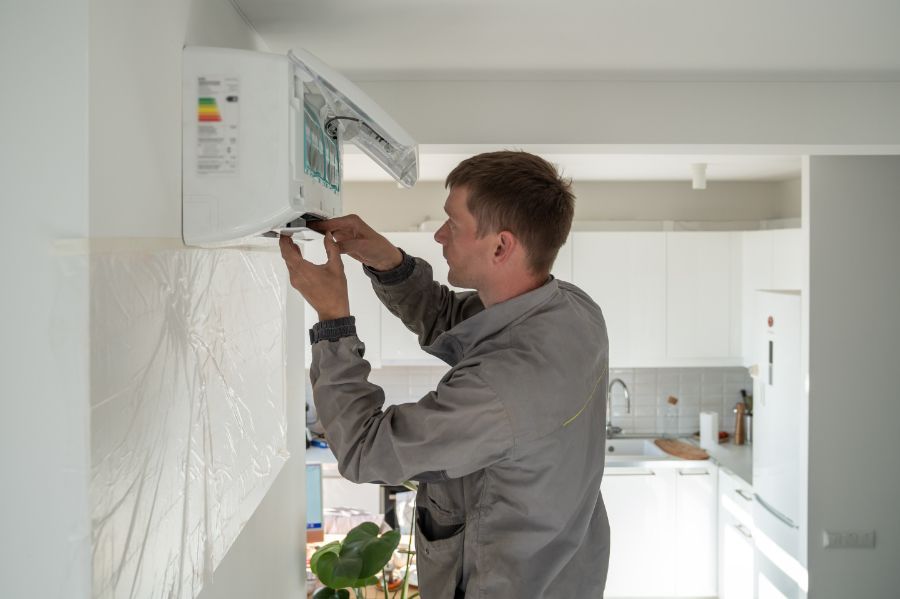3 Signs Your Property Should Install a Mini Split System

With summer heating up, it's important to ensure your tenants' comfort by keeping them cool. For many smaller homes, a window unit may suffice, though to keep tenants satisfied in this hot summer, consider a more efficient mini split system. Tenants can see when you’re trying to improve their living conditions, which can result in long-term tenants with frequent lease renewals. This can ultimately reduce vacancy rates and improve your bottom line.
For this reason, we’ll be going over three signs you should consider installing a mini-split in your rental property.
Poor Temperature Control
As the days seem to get hotter and hotter, traditional window units struggle to provide adequate cooling in some rooms. This can lead to fluctuating temperatures and uncomfortable living spaces. Additionally, because your tenant will need to use the window unit A/C at a lower temperature setting, it can lead to high energy bills. This inefficiency in power consumption and cooling can be detrimental to your tenant’s comfort, which, if left unchecked, can result in a vacancy.
A mini-split system offers more precise temperature control in individual zones, although some additional work would be required for larger homes. That being said, a mini-split system is still considerably more energy efficient than a window unit. In fact, some mini splits can lower your tenant’s energy bill by as much as 30% compared to older window units.
Lack of Ductworks
Compared to central A/C, a mini-split system is far simpler to install. If your property hasn't installed a ductwork system, consider installing a mini-split system. The upfront investment is noticeably lower when compared to a traditional HVAC system. This is also true if the ductwork needs repairs. Ductwork repairs can be as expensive as a new install, depending on the damages. However, you should use your best judgment when deciding on this. Compare the price of repairs to the installation of a mini-split system. On average, the cost of installing a mini-split system with only one air handler is around $1200, assuming there aren't any additional electrical components needed as well. However, if your ductwork is in good shape, it may be worth continuing to use the existing system.
Renovations or Additions
A mini-split system can be ideal if you're considering a renovation or adding new rooms to your rental property to increase rental income. Unlike traditional HVAC systems requiring extensive ductwork, mini-splits can be installed with minimal disruption. This means you can save money by not adding more ductwork to the rental property while providing adequate cooling to the new living spaces.
This makes mini-split systems ideal for retrofitting spaces where ducts, such as rooms with no attic access, may be impractical. Because a mini-split system allows the air handler to be installed in specific areas, it ensures that newly renovated or newly added rooms receive precise cooling in the hot summer months. This targeted approach not only enhances comfort but also maintains the property's overall energy efficiency, which can be attractive to prospective tenants.
Keeping your tenants comfortable during the summer heat is a surefire way to entice a tenant to renew their lease. This can directly improve your rental income and significantly
reduce vacancy rates, which can be incredibly costly. If you are unsure if you should install a mini-split system in your rental or need help managing your Beach City rental property, we invite you to call us today at (562) 888-0247 or complete our
Owner Application online.





